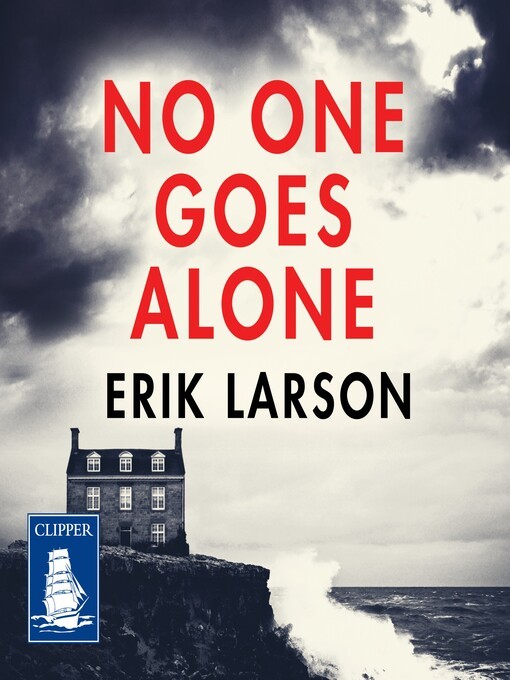Erik Larson Books: A Comprehensive Exploration

Erik Larson, a master storyteller renowned for his meticulously researched and gripping narrative nonfiction, has captivated readers worldwide with his compelling accounts of historical events. His works seamlessly blend historical accuracy with the suspense and pacing of the best fiction, creating immersive reading experiences that leave a lasting impact. This article delves into the world of Erik Larson’s books, exploring their genres, themes, literary influence, and the broader cultural impact they’ve had.

The Genres and Themes of Erik Larson’s Work
Larson’s books predominantly fall under the genre of narrative nonfiction, though his recent foray into fiction with No One Goes Alone demonstrates his versatility as a writer. His nonfiction works consistently delve into historical periods and events, often focusing on seemingly disparate narratives that he masterfully intertwines. Key themes that recur throughout his work include:
Intrigue and Suspense: Larson excels at building suspense, drawing readers into the unfolding narrative with meticulously crafted details and cliffhangers. He expertly uses the techniques of fiction to engage the reader, even within the constraints of factual accuracy.
Human Drama: While his books are grounded in historical events, Larson always prioritizes the human element. He vividly portrays the personalities, motivations, and emotional lives of the individuals involved, allowing readers to connect with them on a personal level. This humanization of historical figures is a key ingredient in his success.
Exploration of the Past: His writing isn’t just about recounting facts; it’s about exploring the complexities of the past, its lessons, and its continuing relevance to the present. He challenges readers to reconsider their understanding of historical events and the individuals who shaped them.
Detailed Research: Larson’s commitment to thorough research is evident in every book. He delves into archives, letters, diaries, and other primary sources, providing rich details that bring his narratives to life. This level of meticulous research lends an unparalleled authenticity to his storytelling.
The Devil in the White City: A Masterpiece of Narrative Nonfiction
Published in 2003, The Devil in the White City is arguably Larson’s most famous work. It intertwines the story of Daniel Burnham, the architect responsible for the 1893 Chicago World’s Fair, with the chilling tale of H.H. Holmes, a serial killer who used the fair as a backdrop for his gruesome crimes. This juxtaposition of ambition and horror creates a compelling narrative that explores the duality of human nature and the era’s rapid societal changes. The book has been praised for its meticulous research, cinematic prose, and ability to seamlessly blend fact and narrative. Its popularity has transcended the book world, sparking interest in the period, the fair itself, and leading to numerous adaptations.

In the Garden of Beasts: A Family’s Experience in Nazi Germany
This 2011 bestseller tells the gripping story of the American ambassador to Nazi Germany, William Dodd, and his family’s experience in Berlin during the tumultuous rise of Hitler’s regime. Larson uses the Dodd family’s perspective to provide an intimate and chilling account of the Nazi Party’s ascent, showcasing the everyday realities of life under the oppressive Nazi regime. The narrative blends the personal struggles of the Dodd family with broader historical contexts, making it a powerful and moving exploration of a dark chapter in human history.
Dead Wake: The Sinking of the Lusitania

Published in 2015, Dead Wake focuses on the sinking of the Lusitania in 1915, a pivotal event that drew the United States into World War I. Larson meticulously reconstructs the events leading up to the tragedy, highlighting the complex political landscape of the time and the various individuals whose actions played a role in the disaster. Through insightful character portrayals and detailed accounts, Larson unveils the human cost of this historical event, underscoring its far-reaching consequences.
The Splendid and the Vile: Churchill’s Leadership During the Blitz
This 2020 bestseller provides a compelling account of Winston Churchill’s leadership during the London Blitz of World War II. Through a detailed look at the 12 months from Churchill’s appointment as Prime Minister, Larson portrays the challenges faced by Britain and its leader during this critical period. He emphasizes both the political and the personal aspects of this time, incorporating private diaries and previously secret intelligence reports, adding layers of depth and intimacy to his narrative.
No One Goes Alone: A Foray into Fiction
No One Goes Alone, Larson’s first foray into fiction, is released exclusively as an audiobook. Set in 1905 on a remote island, the story follows a team of paranormal researchers, including psychologist William James, investigating mysterious disappearances. Larson’s decision to release the story as an audio-only format was made because he felt the spooky nature of the story would be best transmitted through an oral experience, enhancing the atmosphere and suspense. The book has garnered both praise and criticism, with some readers appreciating the unique format and others feeling it lacked the expected level of suspense in a ghost story.
Erik Larson as an Author
Erik Larson’s distinctive authorial voice is characterized by several key elements:
Cinematic Prose: Larson’s writing style is often described as cinematic, drawing the reader into the story with vivid descriptions and a strong sense of pacing. He creates visual imagery, almost as if the reader were watching a movie.
Masterful Storytelling: He possesses a gift for weaving together multiple narratives, creating a coherent and engaging story out of seemingly disparate threads. He is a master storyteller, capable of taking complex historical events and making them accessible and compelling for a wide audience.
Character Development: Larson’s focus on individual characters makes his historical narratives relatable and emotionally resonant. He carefully constructs his character portrayals, drawing the reader into their lives and their struggles.
Historical Accuracy: Despite his narrative approach, Larson remains committed to historical accuracy. While he utilizes creative storytelling techniques, his factual basis is always strong. His research is meticulous and thorough.
Erik Larson’s Inspirations and Writing Process
While Larson’s inspirations vary across his works, a common thread is his fascination with pivotal moments in history and the human stories within these events. He often starts with a single captivating detail or anecdote, which then inspires him to delve deeper into the historical record. His writing process involves extensive archival research followed by a careful crafting of narrative that keeps the reader hooked and engaged.
The Cultural Impact of Erik Larson’s Books
Erik Larson’s books have transcended the realm of historical nonfiction to impact popular culture in several significant ways:
Literary Influence: Larson has inspired numerous writers to explore historical events through narrative nonfiction. His success has shown the potential of this genre to attract a wide readership. He has raised the standard for narrative nonfiction and given it a prominent place on bookshelves.
Adaptations: His books have been adapted into various media formats, including films and television series. This adaptation confirms their widespread appeal beyond the printed page.
Awards and Recognition: Larson has received numerous awards and accolades for his work, highlighting the literary merit of his books. His books have consistently appeared on bestseller lists and have received considerable critical attention.
Communities: His books have fostered online and offline communities of readers who engage in discussions about his work and historical topics. The passionate interest he generates amongst readers is a testament to his writing.
Libraries and Digital Archives
Larson’s commitment to detailed research requires extensive engagement with libraries and digital archives. His work underscores the importance of preserving historical records and making them accessible to researchers and the public alike. The rich historical detail in his books is a direct result of his deep engagement with primary sources found in these institutions.
In conclusion, Erik Larson’s books represent a significant achievement in narrative nonfiction. His meticulous research, compelling storytelling, and evocative prose have established him as a leading figure in the genre, leaving a lasting impact on both the literary world and popular culture. His work continues to captivate and educate readers, inspiring them to engage with history on a personal and profound level.